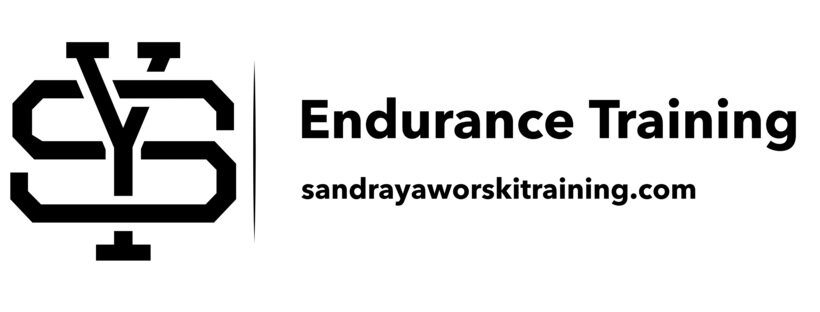Written by Meaghan McCollum.
Meaghan is a naturopathic doctor practicing in Bridgeland, Calgary. She helps people achieve hormonal balance naturally in all stages of life and activity levels. As a avid runner herself she thoroughly enjoys working with endurance athletes. She owns a integrative naturopathic clinic and retail store called Naturmend. Check her out at: https://www.naturmend.com/
Endurance exercise has long been known to disrupt the natural female hormonal cycle. Around 1/4 of all female runners experience frank menstrual cycle disorders (1). And as many as 78% of regularly menstruating female runners (elite and recreational) experience disruptions to ovulation in at least 1 out of 3 cycles. (1). That’s a lot of us.
What exactly are disruptions to the menstrual cycle? Any of the following can occur with greater frequency in athletes:
• Luteal phase deficiency (disrupted / shortened 2nd half of menstrual cycle)
• Anovulation (not ovulating leading to infertility)
• Oligomenorrhea (getting periods less frequently such as every 40-90 days)
• Amenorrhea (not getting a period at all)
• Menorrhagia (Excessive bleeding)
• PMS (no need to explain this one) & PMDD (extreme PMS)
These can be inconvenient, unpleasant symptoms yet also point to disruptions in the healthy balance of hormones. These imbalances can have long term health implications, and in the immediate future can also lead to decreased athletic performance (2,3). All good reasons to pay attention to these signs and work to achieve a better balance.
Fat is important for hormonal balance. We now understand fat tissue to be an important hormone contributor in the body. Two hormones called leptin and adiponectin are produced and released by fat tissue. When there is a rapid decrease in body weight and fat, leptin drops and adiponectin increases. The result of these shifts can affect female hormone release and prevent ovulation (4,5). Both of these effects are instigated by rapid weight loss, emphasizing the importance of gradual weight loss in athletes and maintaining appropriate body weight.
Some women once they drop below a certain body fat percentage may experience disruptions in their cycle even if the weight loss was gradual. Although dropping below a certain body fat percentage was a popular theory in menstrual disturbances in athletes, it is not true for every woman and is very dependent on individual requirements for body fat.
Stress and cortisol
Cortisol is a stress hormone that is released during exercise particularly longer duration and higher intensity exercise. Cortisol can also impact the female menstrual cycle by suppressing upstream hormone release from the brain (6). Managing cortisol levels during training and non-training times could reduce the overall load of cortisol on the hormonal system. This is also pertinent to emotional stress which results in greater cortisol levels as well.
Progesterone and estrogen are essential for your monthly rhythm
Progesterone and estrogen are hormones important in the normal functioning of the female menstrual cycle. Both are affected by intensive and prolonged exercise and are typically suppressed with chronic exercise (7). This of course has implications on the proper functioning of the menstrual cycle. Additionally estrogen plays an important role in preventing excessive muscle damage following endurance exercise (estrogen study)
What can you do to keep your female hormones cycling regularly and healthfully?
• When trying to achieve a lower weight, take a slow and steady weight loss approach. This is to prevent the hormones leptin from dropping and adiponectin from increasing, which are connected to the proper function of your menstrual cycle. Eat enough food to power your training.
• Increase exercise intensity in a slow and steady approach (a.k.a: listening to your coach).
• When under significant emotional stress consider cutting back on intensity and/or volume of training. This will not only function to keep your cycle on track, but also help to prevent injury.
• Practice good nutrition pre, during and post workouts. This helps to keep cortisol release to a minimum by regulating blood sugar.
• Balance the stress of intensive exercise with calming activities such as gentle yoga, meditation, artwork or other calm activities that spark joy for you.
• If you’ve done everything above and are still experiencing troubles with your cycle: Consider investigating herbal treatment to help support your body toward hormonal balance while also supporting athletic performance.
Although running and other intensive endurance activity is associated with disturbances in the female menstrual cycle, you can still train hard and keep your monthly rhythm healthy. For some it takes a bit more effort, care and strategy surrounding diet, supplementation and rest. The benefit is worth it: better long term hormonal outcomes along with improved athletic performance and minimal PMS.
Meaghan McCollum ND
www.naturmend.com
References
1. Roupas ND and Georgopoulos NA. Menstrual function in sports. 2011. Hormones. 10(2):104-116.
2. Czajkowska M. et al. Menstrual cycle and the prevalence of premenstrual syndrome/ premenstrual dysphoric disorder in adolescent athletes. 2015. J podiatry Adolesc Gynecol 28:492-498
3. Takeda T. et al. Premenstrual syndrome and premenstrual dysphoric disorder in Japanese collegiate athletes. 2015. podiatry Adolesc Gynecol. 28:215-218.
4. Moschos S, et al. Leptin and reproduction; a review. 2002. Fertil Steril 77: 433-444.
5. Rodriguez-Pacheco F, et al, Regulation of pituitary cell function by adiponectin. 2007. Endocrin. 148: 401-410.
6. Loucks AB, et al. Alterations in the hypothalamic-pituitary-ovarian and the hypothalamic-pituitary-adrenal axis in athletic women. 1989. J Clin Endocrinol Metab 68: 402-411.
7. Otag A. et al. Effect of increasing maximal aerobic exercise on serum gonadal hormones and alpha-fetoprotein in the luteal phase of professional female soccer players. 2016. J. Phys Ther Sci. 28:807-810.


